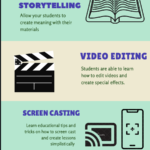This week our cohort learned about active learning techniques in relation to assessment, as well as how online games can improve teachers’ use of multimedia principles. When assessment time comes for a teacher, they need to evaluate what learning has been gained by the student. A few posts ago I wrote on Inquiry-based learning and this teaching style sounds similar to Understanding by Design. Where UbD is a goal-based learning outcome as well and encourages students to connect to meaningful understandings. Understanding by design encourages students to retain knowledge and develop students’ goals for meaningful understandings (Wiggins & McTighe, 2011). To assess, teachers should think of the Backwards Design process where the three main goals are to, 1. Identify the students learning outcomes, 2. determine the assessment, and 3. plan exercises and teaching cues to facilitate students’ understanding (Wiggins & McTighe, 2011).
The style of assessment is important for students’ development and understanding. The traditional idea of assessment uses summative forms, which are exams or tests that provide a grade for the student on what knowledge they have retained. This is time-efficient and cost-benefit for the teacher and often does not allow the student to receive feedback to improve their learning (Queen’s University, n.d.). There is also formative assessment, where students are not solely evaluated from regurgitation or final exam practice, rather they are assessed throughout their learning process (Richards, 2021). It allows the studnet to make mistakes and learn from feedback to further enhance their understanding. Formative assessment can be any style of activity that allows the teacher to see the student’s progress and practice their understanding for improved results (Queen’s University, n.d.).
With our current understanding of active learning and multimedia learning principles, as teachers, we can combine online games to enhance students learning ability. For Game-Base Learning to be effective teachers must choose games that include the content of the material but also encourages the studnet to interact and play with the game itself. In addition to this, the game should be challenging, have space for creativity, contain learning goals, and provide feedback (Richards, 2021). Personally, as a prospective teacher, I am excited to use Minecraft education as a multimedia learning aspect in my future classroom. This game is very creative and unique and allows the teacher to pre-create a Minecraft world for the student to play and interact with each other.
Here are some more great resources we looked at this week for Game-Based Educaiton:
SecondLife (UVic)
MinecraftEDU (UVic)
References:
Wiggins, G., & McTighe, J. (2011). The Understanding by Design Guide to creating high-quality units. Alexandria, VA: ASCD
Understanding the Role of Assessment in Learning. Reflection. (n.d.). https://www.queensu.ca/teachingandlearning/modules/assessments/08_s1_05_reflection.html.
Digital Pedagogy – A Guide for Librarians, Faculty, and Students: Game Based Learning – Best Practices. Research guides. (n.d.). https://guides.library.utoronto.ca/c.php?g=448614&p=3507705.
Richards, L. (2021). Assessment of Active and Passive Learning and Using Multimedia Tools in Game-Based Learning. EDCI 337, topic 6. https://edtechuvic.ca/edci337/2021/06/12/6-topic-assessment-of-active-and-passive-learning-and-using-multimedia-tools-in-game-based-learning/



